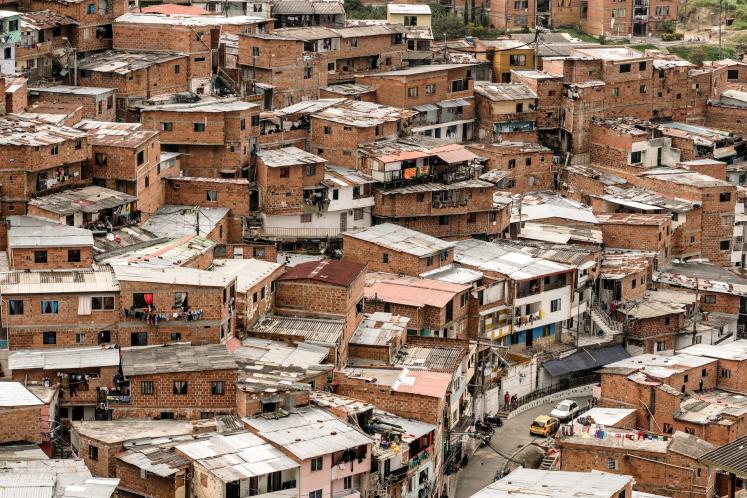The relationship between climate change and migration has been of interest to researchers and policymakers for more than 25 years – but misleading claims about climate-induced mass migration from the Global South to the Global North (e.g. Africa to Europe) continue to surface in media and public policy domains.
Migrating from climate-sensitive areas can be an effective strategy of adaptation, but contrary to popular belief, people rarely move beyond borders. If they migrate for reasons related to climate change, they tend to move to cities within their own countries because of the perceived employment, education, and healthcare opportunities that urban areas offer.
As engines of development and sites of social dynamism and economic flux, cities are particularly attractive for people in climate-vulnerable rural areas where climatic events such as droughts and heatwaves complicate existing livelihood opportunities that were already challenged by poverty, economic inequality, and population growth.
These insights are increasingly reflected in shifting research priorities: from a tendency to focus mainly on the movement of people between countries to a growing interest in climate-related migration within countries, particularly into cities. In order to better understand current research trends and gaps, a group of researchers at the University of Oxford undertook a systematic review of research on the relationships between climate change, migration, and urban development, published from 2011 to 2020. The review was recently published in Urban Climate and this blog presents the key findings.
Numbers of publications by year and region
Over the last 10 years, there has been a significant increase in the number of publications focusing on the relationships between climate change, migration and urban development. The review shows that there were notable increases in 2012, 2015-16 and 2019. These increases are related to events or publications outside of academia such as the publication of The Foresight Report on Migration and Global Environmental Change, the Groundswell report, the Fifth Assessment Report of the Intergovernmental Panel on Climate Change and the Paris Agreement.
There are also geographical differentiations in research exploring these relationships. Fast-onset climate change, particularly floods and cyclones, is discussed more often than slow-onset climate change for South Asia; whereas the converse is true for sub-Saharan Africa with a strong focus on desertification. This difference may have implications for the temporal (e.g., permanent, circular) and spatial (e.g., rural to rural, rural to urban, urban to rural areas) nature of climate-related migration in the regions, which requires further research.
Climate-related migration to cities
In terms of geographical scale, there is a clear shift in orientation towards climate-related migration and cities. Almost half of the reviewed documents focus explicitly on the city level, and the dominance of this scale was particularly prominent in 2019 and 2020. Within the city-oriented literature, there is a strong emphasis on capital and large cities, with less attention to small and medium-sized cities. Although disproportionate attention to larger cities is common across the wider urban studies literature, the pattern observed suggests that ‘bigger means more important’ is still pervasive in research on climate mobilities into cities.
Our systematic review shows the growing significance of the urban lens through which climate-related migration is understood. It demonstrates why it is important to consider the dynamics of the urban systems that would be affected by both climate-related migration and the impact of climate change. Climate-related migration into cities has significant implications for urban development and the realization of urban policy objectives, including the achievement of the Sustainable Development Goals (SDGs). Pressures on urban infrastructures for housing, employment, water and sanitation, public health, and transportation may be exacerbated, and climate-related migrants could become disproportionately dependent on the informal sectors and systems of cities.
For climate-related migrants, the search for somewhere to work is often less difficult than the struggle to find somewhere to live. The latter often generates the self-build urban slums that are commonly characterised as informal settlements. Hence, with regard to climate-related migration, the concept of informality needs to be addressed as a city-wide organisational form that applies not only to the urban labour market but also to the urban concentration of people living in situations where their legal status and rights are precarious. This aspect of informality needs to be scrutinised in terms of how climate-related migration contributes to each of these urban processes in different geographical contexts. Ethnographic methods are more suited to this kind of inquiry than the quantitative approaches that dominated the literature we reviewed. They may help policymakers to explore whether understandings of informality are directly relevant to how climate-related migrants live, work, and get by in the city.
Many informal settlements are subject to longstanding neglect from city governments. Yet, when it comes to policy interventions, the review shows that studies frequently stress the moral case for simple interventions in the city, particularly in the spaces of informal settlement. Such studies are usually cautious about advocating specific policy interventions tailored to specific cities. Nonetheless, a case can be made for research at the intersection of science and action that co-produces knowledge, public awareness and interventions with all relevant constituencies about how the multiple and intersecting vulnerabilities and marginalisation of the vast majority of migrants into cities can be addressed, mitigated, and prevented.
Suggested citation: "Climate-Related Migration Into Cities: What We Know and Why It Matters," UNU-CPR (blog), 2022-11-30, 2023, https://unu.edu/cpr/blog-post/climate-related-migration-cities-what-we-know-and-why-it-matters.





